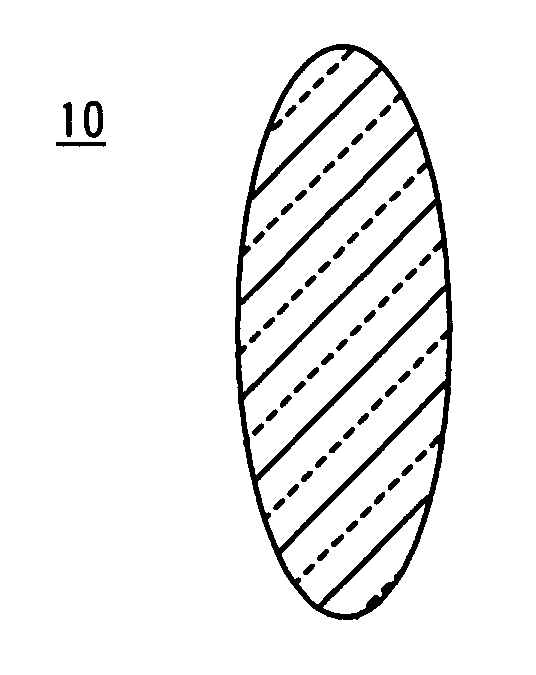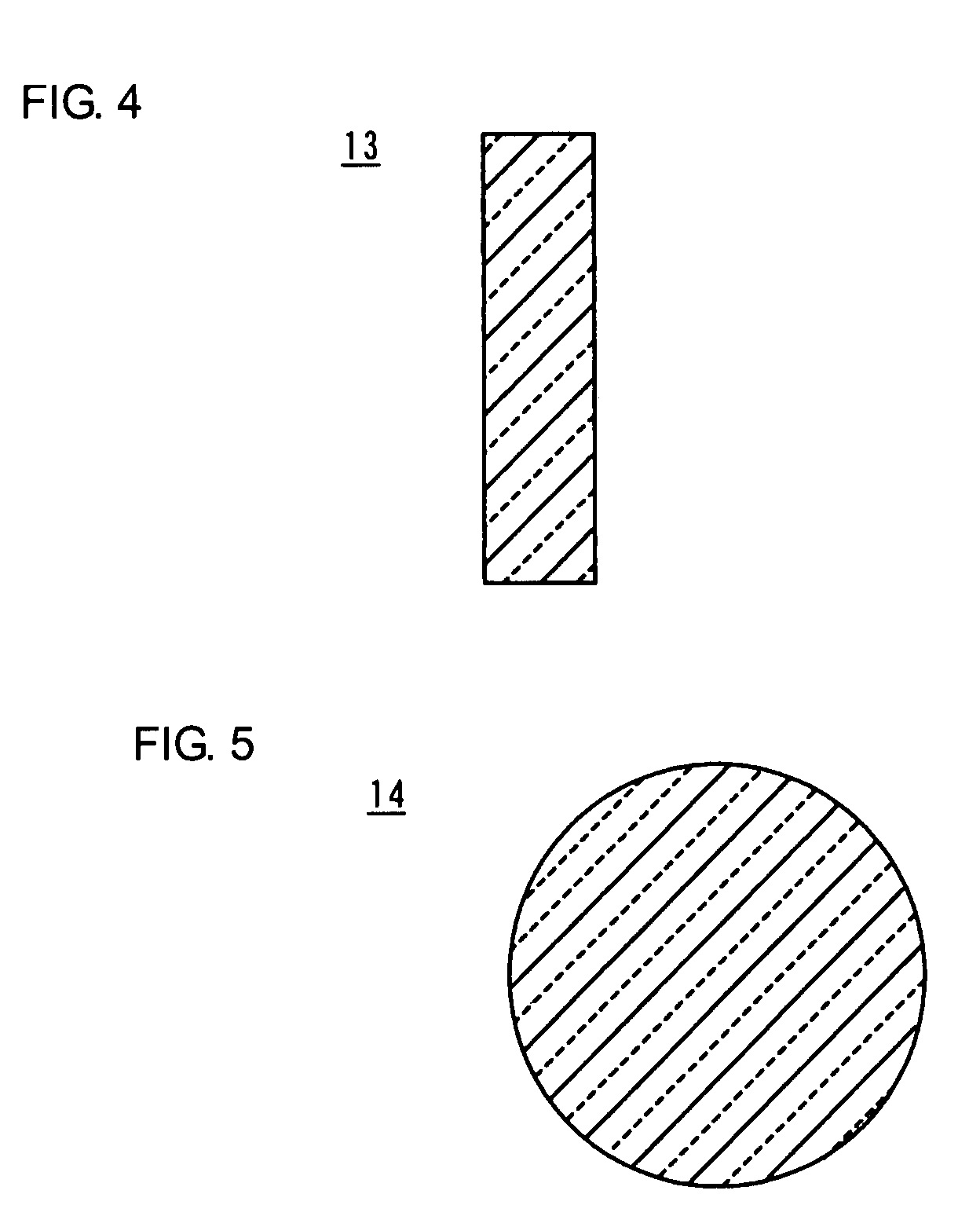Translucent ceramic and method for manufacturing the same, and optical component and optical device
a technology of transparent ceramics and optical components, applied in the field of transparent ceramics and methods for manufacturing the same, optical components and optical devices, can solve the problems of difficult to efficiently allow incident light to pass through plastics, difficult to converge incident light, disadvantageous poor moisture resistance of plastics, etc., to achieve desired optical properties, high anomalous dispersion g, and high refractive index
- Summary
- Abstract
- Description
- Claims
- Application Information
AI Technical Summary
Benefits of technology
Problems solved by technology
Method used
Image
Examples
example 1
[0083]Example 1 corresponds to the first aspect of the present invention.
[0084]High purity powders of BaCO3, In2O3, Y2O3, Ta2O5, Nb2O5, SnO2, ZrO2, TiO2 and HfO2 were prepared as raw materials. The raw materials were weighed such that samples represented by a general formula of Ba{Mx(Y1-tInt)y(Ta1-uNbu)z}vOw (wherein M is at least one selected from the group consisting of Ti, Sn, Zr and Hf) and listed in Table 1 could be prepared. The raw materials were wet-blended in a ball mill for 16 hours. The mixture was dried and was calcined at 1200° C. for 3 hours to produce a calcined powder. After the calcination, the value of w was almost three.
[0085]In the column “Type and content of M” in Table 1, the content of M is the same as the value of x when M is composed of one element. When M is composed of two elements, the sum of the contents of the two elements is equal to the value of x.
[0086]Then the calcined powder, water and an organic binder were charged in a ball mill and were wet-grin...
example 2
[0114]While In and Y were used as the tervalent metallic elements in Example 1, Sc, Tb, Ho and Sm were used in Example 2.
[0115]High purity powders of BaCO3, Sc2O3, Tb2O3, Ho2O3, Sm2O3, Ta2O5, Nb2O5, SnO2, ZrO2, TiO2 and HfO2 were prepared as raw materials. The raw powders were weighed such that samples represented by a general formula of Ba{MxB1yB2z}vOw (wherein B1 is a trivalent metallic element, B2 is a pentavalent metallic element, and M is at least one selected from the group consisting of Ti, Sn, Zr and Hf) and listed in Table 5 could be prepared. The raw powders were wet-blended in a ball mill for 16 hours. The mixture was dried and was calcined at 1200° C. for 3 hours to produce a calcined powder. After the calcination, the value of w was almost three.
[0116]Then, a translucent ceramic sample was produced in the same way as in Example 1. The linear transmittance, the refractive index, the Abbe number and the anomalous dispersion were evaluated in the same way. Table 5 shows th...
example 3
[0119]Example 3 corresponds to the second aspect of the present invention.
[0120]High purity powders of BaCO3, In2O3, Y2O3, MgCO3, ZnO, Ta2O5, SnO2, ZrO2, TiO2 and HfO2 were prepared as raw materials. The raw powders were weighed such that samples represented by a general formula of Ba{Mx(B1sB31-s)yB2z}vOw (wherein B1 is a trivalent metallic element, B2 is a pentavalent metallic element, and M is at least one selected from the group consisting of Ti, Sn, Zr and Hf) and listed in Table 6 could be prepared. The raw powders were wet-blended in a ball mill for 16 hours. The mixture was dried and was calcined at 1200° C. for 3 hours to produce a calcined powder. After the calcination, the value of w was almost three.
[0121]Then, a translucent ceramic sample was produced in the same way as in Example 1. The linear transmittance, the refractive index, the Abbe number and the anomalous dispersion were evaluated in the same way. Table 6 shows the results.
[0122]
TABLE 6LineartransmittanceRefract...
PUM
| Property | Measurement | Unit |
|---|---|---|
| linear transmittance | aaaaa | aaaaa |
| thickness | aaaaa | aaaaa |
| thickness | aaaaa | aaaaa |
Abstract
Description
Claims
Application Information
 Login to View More
Login to View More - R&D
- Intellectual Property
- Life Sciences
- Materials
- Tech Scout
- Unparalleled Data Quality
- Higher Quality Content
- 60% Fewer Hallucinations
Browse by: Latest US Patents, China's latest patents, Technical Efficacy Thesaurus, Application Domain, Technology Topic, Popular Technical Reports.
© 2025 PatSnap. All rights reserved.Legal|Privacy policy|Modern Slavery Act Transparency Statement|Sitemap|About US| Contact US: help@patsnap.com



